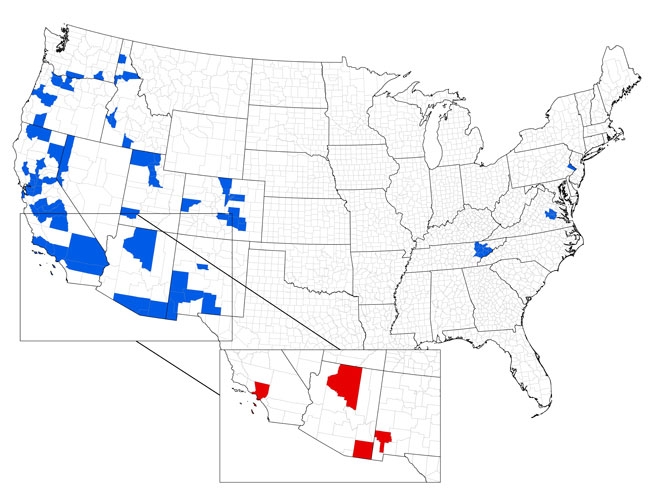- Contact: Mary Louise Flint

“The disease has killed thousands of black walnut trees in California’s landscape and is threatening commercial walnut trees as well,” said Mary Louise Flint, UC Cooperative Extension specialist in the Department of Entomology at UC Davis and UC Statewide IPM Program.
Thousand cankers disease has now moved into the eastern U.S., where it threatens valuable stands of black walnut timber east of the Mississippi. Once in trees, the beetle and fungus cause gradual decline and eventual death by killing the vital phloem tissue beneath the bark.
The guidelines and trapping methods were developed by a team of entomologists from UC Davis and the USDA Forest Service Pacific Southwest Research Station in Davis. In 2010 and 2011, the scientific team discovered and patented an aggregation pheromone for the beetle and conducted scientific trials in northern California.
Late in the summer of 2011, they demonstrated the efficacy of the pheromone as a flight trap bait for detecting new populations of the beetle in Tennessee, Virginia and Utah. The demonstration-research project was extended to Pennsylvania in 2012. The bait lures both male and female beetles into a small plastic funnel trap. The team worked with a commercial partner, Contech Enterprises, Inc., to develop the technology.

As the eastern black walnut resource is valued at over $500 billion, the stakes are high for containing thousand cankers disease if it is introduced into key timber-producing states like Indiana and Missouri.
The study team is also using the traps and pheromone in research in California to learn more about biology and potential management strategies for the beetle in commercial walnut orchards and wildland areas.
The trapping guidelines are presented in a full-length document with color photographs and details on identifying the beetle, a short version for use in the field, and two video clips that demonstrate how to set up and service the traps. Find them at http://www.ipm.ucdavis.edu/thousandcankers.
In addition to Flint, members of the UC Davis and USDA scientific team and authors of guidelines are Steven J. Seybold, insect chemical ecologist, USDA Forest Service, based at Pacific Southwest Research Station in Davis; Paul L. Dallara, postdoctoral research scientist in the Department of Entomology at UC Davis; and Stacy M. Hishinuma, graduate student, Department of Entomology at UC Davis.



